Award of Excellence
plantLAB
Mike Cook, Student ASLA; Chris DeHenzel, Student ASLA; Brian Gillett, Student Affiliate ASLA; Rockne Hanish, Student Affiliate ASLA and Darryl Jones, Student ASLA, Graduate, University of California, Berkeley
Faculty Advisor: Judith Stilgenbauer

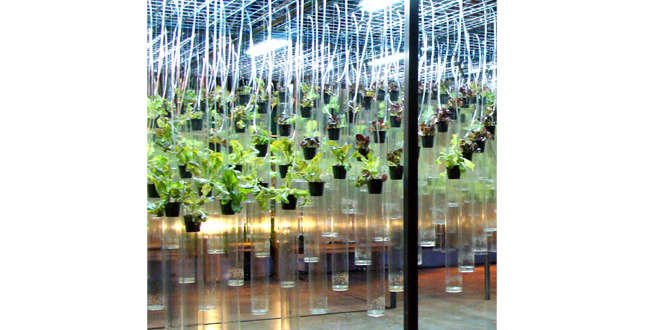

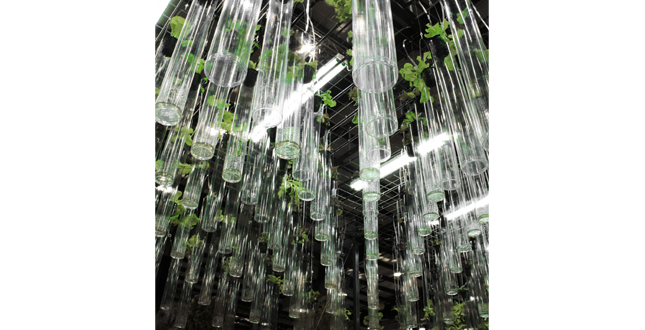 Close Me!
Close Me!Plastic tubes serve as the means of water collection and re-distribution, acting as counterweight to keep the plants vertical.
Download Hi-Res ImageImage: Rockne Hanish, Ileana Acevedo and Chris DeHenzel
Image 4 of 13
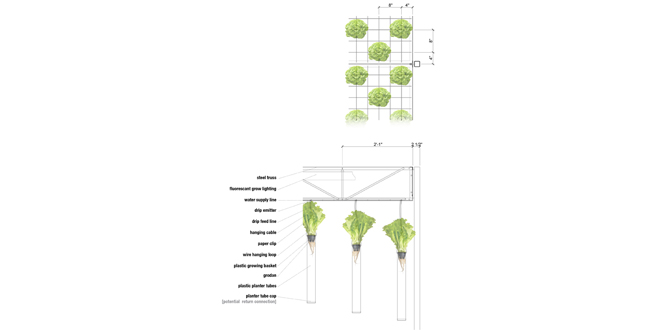
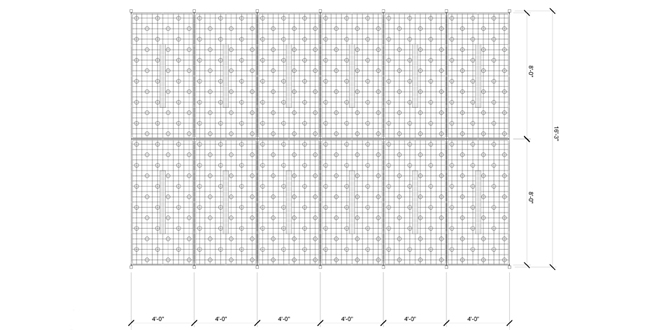
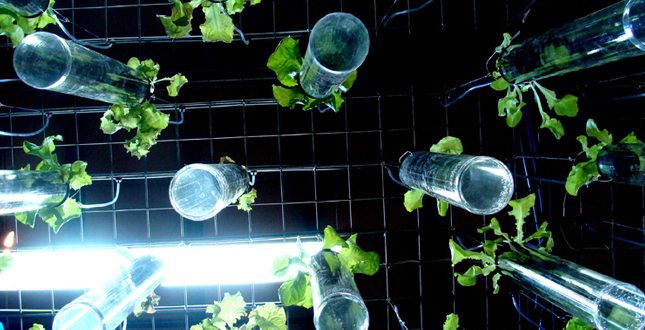 Close Me!
Close Me!Plan spacing allows for a variety of different edible plants to be grown.
Download Hi-Res ImageImage: Rockne Hanish, Ileana Acevedo and Chris DeHenzel
Image 7 of 13


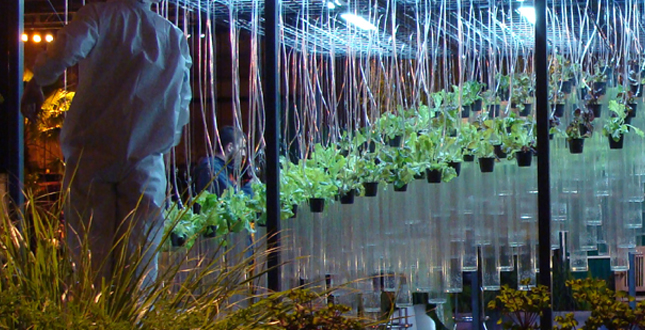
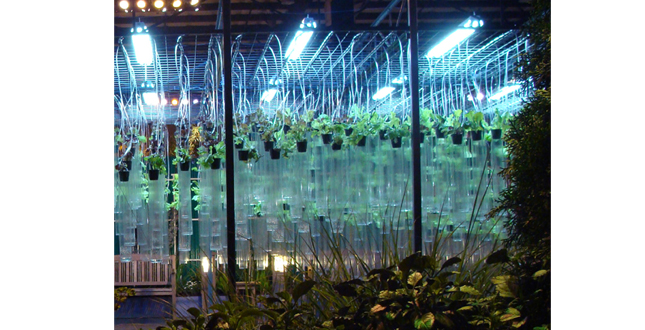
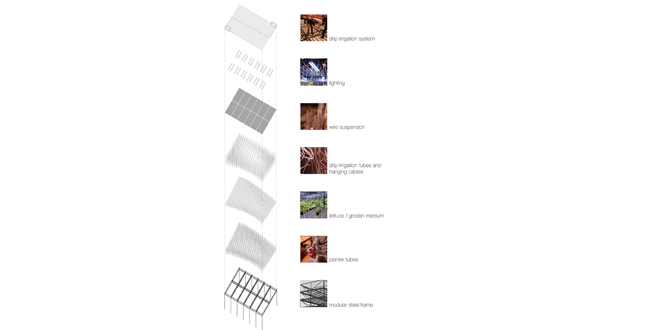
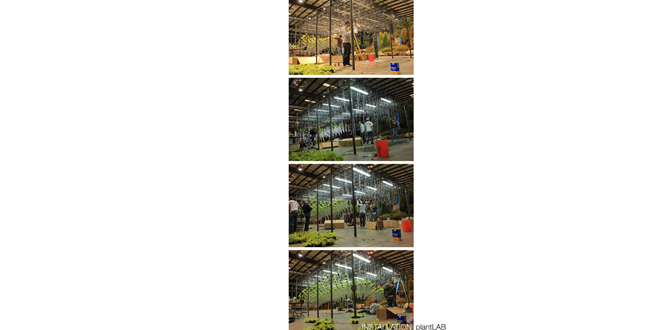 Close Me!
Close Me!Installation
Download Hi-Res ImageImage: Rockne Hanish, Ileana Acevedo and Chris DeHenzel
Image 13 of 13
Project Statement
The plantLAB is an experiment in hydroponic gardening and landscape garden design, conceived and constructed by a team of graduate and undergraduate architecture/landscape students for the 2011 San Francisco Garden Show. The project addresses issues of food production and normative definitions of "garden" through an interpretation of hydroponic methods for a temporary gallery exhibition. It consists of a modular steel frame that supports an irrigation system and a volumetric field of hydroponically grown lettuce.
Project Narrative
—2011 Student Awards Jury
Concept
The plantLAB is a volumetric field of edible plants, grown using hydroponic methods to expose and articulate the use of water in the "living California garden" (the theme of the 2011 San Francisco Garden Show). The project attempts to negotiate the dialectic between edible gardens and the industrial production of food. Sustainability is a lifestyle issue that has global implications. The catalyst for modifying lifestyle choices may be implemented through top-down public policy and planning, but also through shifts in local trends that may be stimulated by media and the arts. Food choices are inherently personal, but reflect cultural attitudes and demand elaborate infrastructural systems to support urban lifestyles. The plantLAB is a provocation that is intended to question the role of food production in cultural landscapes. It is not a model of precise efficiency relative to the potential of industrial hydroponic methods, but it defies the convention of "garden" in the typical urban homestead.
Design
Rather than constructing a new ground, the garden is formed by a landscape of 432 suspended crystalline tubes and water distribution systems that allow visitors to circulate around the garden and inhabit the space beneath it. Each recyclable clear plastic tube contains a plant, an inorganic growing medium, and a connection to a drip irrigation system, which circulates nutrient infused water from a submersible pump in a suspended reservoir. The implied topography created by the planter tubes was designed to allow for a re-circulating irrigation system, so that excess water could collect at the bottom of each tube and feed back to pumps at two low points in the project. These interconnected systems are suspended from a custom steel frame that also supports an array of UV lights. The polished concrete floor of the exhibition hall remains explicitly unfinished to intensify the synthetic quality of the installation as an experimental plant laboratory.
Fabrication / Cultivation
This project illustrates a comprehensive process from concept to fabrication/cultivation and installation. The team of students was solely responsible for the design, material sourcing, and fabrication of the steel frame. Most of this work was accomplished in the metal shop at the university. The custom welded frame consists of 12 independent modules that bolt together, but allow for simple disassembly and potential reconfiguration.
The team consulted with a local hydroponic retailer for technical issues related to growing lettuce hydroponically. After several months of small-scale experiments, we selected and planted 5 cultivars of lettuce seeds and managed every aspect of the hydroponic growing process in a propagation room at the retailer’s warehouse. The cultivars are as follows: Black-seeded Simpson, New Red Fire, Claremont, Coastal Star and Icaro. The lettuce was transplanted from the warehouse to the installation several days before the event so that it could adapt to new conditions and continue its growth during the show.
Installation / Details
The material quality of the project is intentionally synthetic to contrast the typical aesthetic associated with community gardens, and to recall the ubiquitous industrial system of global food production. The project team designed the details through material experimentation, testing readily available products for efficiency, simplicity and economy. The result was an almost humorous combination of paper clips, zip ties, steel cable, metal eyelets, irrigation and shipping tubes, metal mesh, acrylic and of course, lettuce. The effect at the show was shocking for some, indifferent for others, and nearly euphoric for a few. An award from the ASLA would be an opportunity for further exposure and expected criticism, but hopefully contribute to the compelling contemporary discourse of our profession.
Additional Project Credits
3rd Street Hydroponics
Ewing Irrigation
San Francisco Flower and Garden Show






